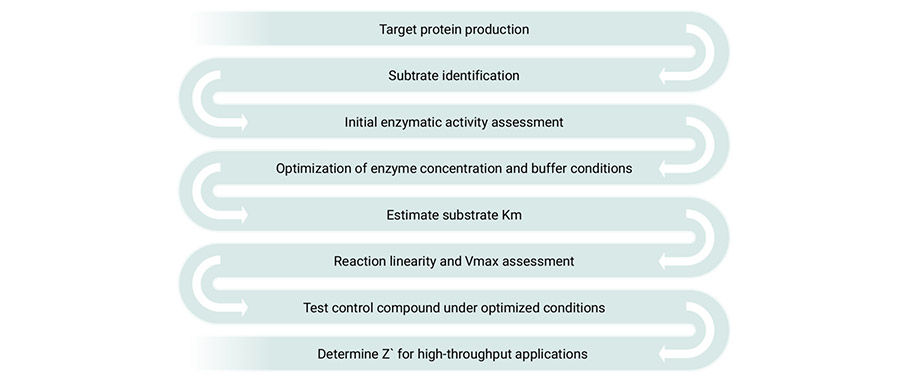Assay Development
Every drug discovery project requires a sequence of assays whose requirements are shaped by the nature of the target, the compound, and the substrate.
Assays for primary screening, hit confirmation assays, biophysical assays for lead identification, mechanism of action studies, mode of action testing, as well as secondary assays for compound screening in intact cells may be needed. Using the Reaction Oncology Platform, our team of biophysicists, biologists, and chemists will help decide which assays are required to match the exact requirements of your project.
Our assay development teams build on 20 years of experience and more than 2,000 assay establishments. We will create the assays suite needed, including molecular biology, technology development, assay validation, and tool compound testing for a seamless transition between assay formats.
Example flow chart for the development of a de novo kinase activity assay:

